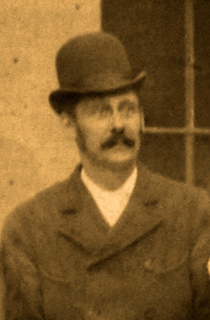P W D L
7 3 0 4
Club Captain : Fred Meager
Moving to the St Helens Ground had a tremendous effect on the Rugby Club as the new ground was prepared for Cricket in the summer months and rugby football in winter. The Cambrian of 19th May 1876 carries a report of the pride felt at the appearance of the newly prepared pitches: The plot of ground at St Helens which was in heaps and pools “when it came into possession of the Club, has been transformed into as level and as fine a cricket field as can well be found in the provinces. A very large extent of it has been levelled and turfed so perfectly as to resemble a huge billiard table. A substantial bric wall shuts off the field from the roadways that bound it, and the chief entrance is imposing with its massive doorways and free stone capitals. On the South side of the field, inside the wall, a terrace has been constructed, well turfed and with a row of thriving saplings in the rear, whence a good view of the whole field can be obtained.”

E Copus was one of the earliest Swansea Rugby Football Club players of whom records remain. Copus is recorded playing as a back against Brecon in an away fixture on Boxing Day of 1874. Last appearing for Swansea in 1878, Copus went on to serve on the committee and also to umpire matches.
With Swansea now establishing St Helens as a home ground, the Club could grow and prosper with a sound base. Expectation was high as the new season arrived and a report in The Cambrian of 13th October 1876 tells of pre-season activity at St Helens:
“The Football Season was opened in Swansea on Saturday last by a game played amongst themselves by the members of the Swansea Football Club on the ground belonging to the Cricket Club at St Helens. Numerically we are glad to hear, the Club is much stronger than it ever has been before and we hope it will prove better as regards skill. Over thirty members were present when sides were picked at three O’clock by Mr Chambers the Captain of the Club and Mr Warren the Secretary and Treasurer. The gallant captain’s side had the game nearly all its own way, notwithstanding a very plucky defence and some good runs on behalf of the Secretary’s team. Some really good play was shown on both sides and some of the new members rendered themselves conspicuous. Play continued for about an hour and a half when the majority of the men had had enough for the first day.”
The above meeting was also covered by the Western Mail of Wednesday 11th Oct 1876 which points out that “… most of the men were very much out of condition.” A situation not really surprising in the infancy of the game in Wales. They played 16 a side. The Swansea captain’s side led by Chambers apparently the less unfit of the two: “Mr Chambers’ team had decidedly the best of the game; although their adversaries did their best to keep them back, superior weight carried the day, and the captain’s side proved victorious by two goals and two tries to one try.”
The first ever match at the new St Helen’s ground was against Llandovery College on 4th Nov. 1876. Swansea won by 2 goals, 4 tries and 6 touch-downs to 2 goals.
It is interesting to note that Glamorgan County were also scheduled to play The Rest Of South Wales at the Swansea ground (Nov 30) that season a recognition of the ground’s excellence and the Club’s prominence within the South Wales Football Union. This season, South Wales played Hereford twice (at Hereford & Brecon) and The West Of England (at Hereford) in a predecessor to the later full internationals.
Eventually 7 matches were completed in the 1876-77 season, 3 being won and 4 lost.
